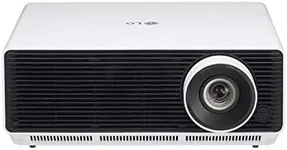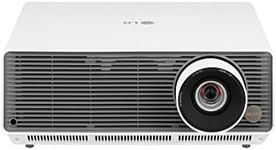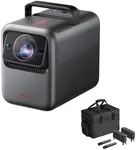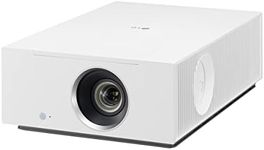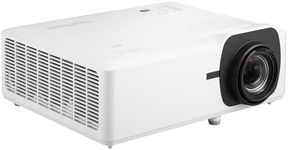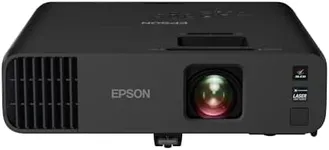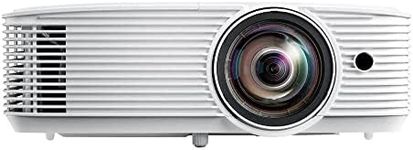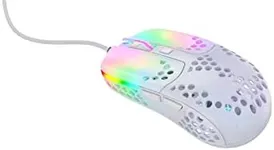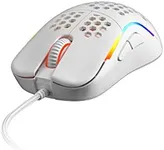Buying Guide for the Best Wireless Projectors
Choosing the right wireless projector can significantly enhance your viewing experience, whether it's for business presentations, educational purposes, or home entertainment. The key is to understand the various specifications and how they align with your specific needs. By focusing on the right features, you can ensure that you get a projector that delivers the performance and convenience you require.ResolutionResolution refers to the number of pixels that make up the image projected on the screen. Higher resolution means more pixels and a clearer, more detailed image. Common resolutions include 720p (HD), 1080p (Full HD), and 4K (Ultra HD). For business presentations or educational purposes, 720p or 1080p may suffice. However, for home entertainment, especially if you plan to watch movies or play video games, a 1080p or 4K projector will provide a much better viewing experience.
BrightnessBrightness is measured in lumens and indicates how bright the projected image will be. This is crucial because it affects how well the image can be seen in different lighting conditions. For dimly lit rooms, a projector with 1,000 to 2,000 lumens may be adequate. For rooms with some ambient light, look for a projector with 2,000 to 3,000 lumens. For well-lit rooms or outdoor use, you will need a projector with 3,000 lumens or more to ensure the image remains clear and visible.
Contrast RatioThe contrast ratio measures the difference between the darkest and brightest parts of the image. A higher contrast ratio means more detail in the shadows and highlights, resulting in a more vibrant and dynamic picture. For general use, a contrast ratio of 1,000:1 to 3,000:1 is usually sufficient. For home theater setups where image quality is paramount, look for a contrast ratio of 10,000:1 or higher.
Wireless ConnectivityWireless connectivity allows you to connect your projector to various devices without the need for cables. This can include Wi-Fi, Bluetooth, or proprietary wireless technologies. It's important because it offers convenience and flexibility in how you set up and use your projector. Ensure the projector supports the wireless standards compatible with your devices. For example, if you plan to stream content from your smartphone or laptop, make sure the projector supports screen mirroring or casting.
PortabilityPortability refers to the ease with which you can move and set up the projector. This is particularly important if you plan to use the projector in multiple locations. Portable projectors are typically smaller and lighter, making them easier to carry. However, they may have lower brightness and fewer features compared to larger, more stationary models. Consider how often you will need to move the projector and choose one that balances portability with the necessary performance.
Lamp LifeLamp life indicates how long the projector's lamp will last before it needs to be replaced. This is measured in hours and can range from 2,000 to 20,000 hours or more. Longer lamp life means less frequent replacements and lower maintenance costs. If you plan to use the projector frequently, look for a model with a longer lamp life. For occasional use, lamp life may be less critical, but it's still a good idea to choose a projector with a reasonable lifespan to avoid frequent replacements.
Throw DistanceThrow distance is the distance between the projector and the screen, which determines the size of the projected image. Short throw projectors can produce a large image from a short distance, making them ideal for small rooms. Long throw projectors require more distance to produce the same image size, which is suitable for larger spaces. Consider the size of the room where you will use the projector and choose a model with a throw distance that fits your space.
